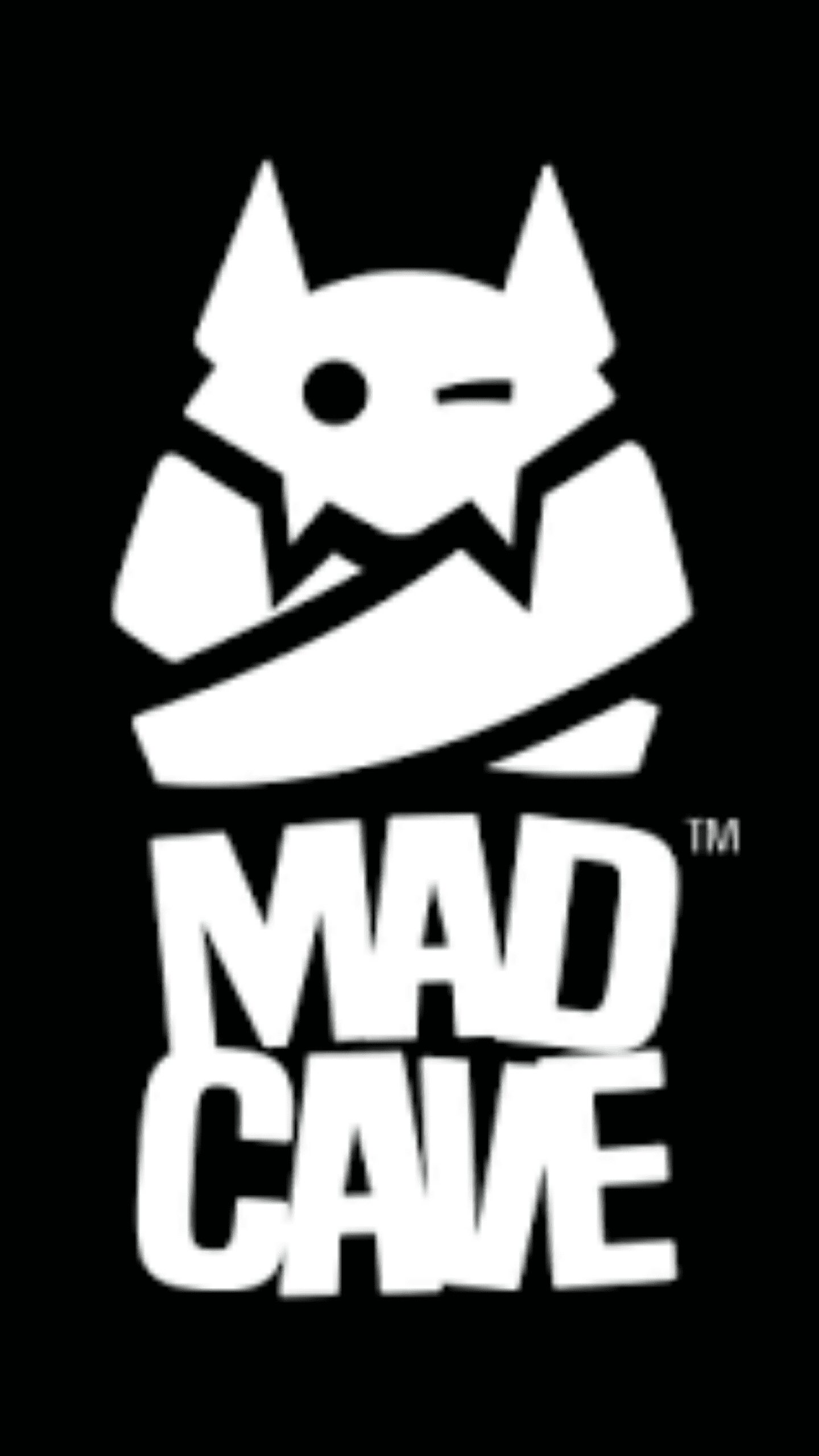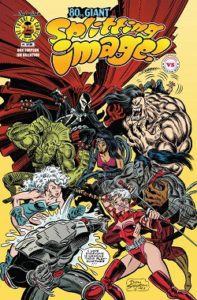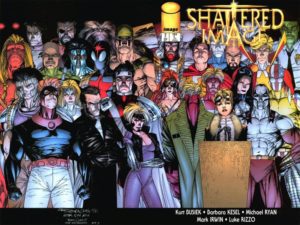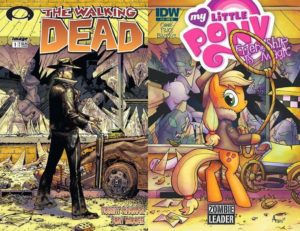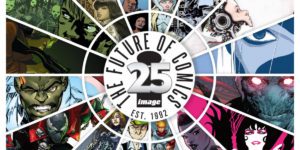I want to preface this editorial by stating upfront that I have tremendous respect and admiration for the creators, past and present, who have put their time, love and talents into Image Comics. I am just one fan, among millions, who have been a witness to this company’s journey from its foundation to becoming a comic industry staple. What follows are my own personal opinions about the current state of Image and giving myself the freedom to Monday morning quarterback the choices and decisions going forward. I have been, I am, and I will continue to be, a loyal fan and customer of Image.
Every comic book fan has the same dream. We all wish that we could wake up one morning, start our own comic book company and share our creations with the world to stunning success. We all do it. Every one of us has daydreamed about how we would run our imaginary company; the famous writers and artists that we would work with if we had no restraint.
For some of us, the dream of creating comics becomes a reality. Some have the hard-earned, god-given talent to create, and for those fortunate few they will spend their lives pursuing the dream of success and artistic fulfillment.
But for a smaller group of creators, they have not only achieved success and have lived the artist’s dream; they are fortunate enough to shape the future of the industry. These few talented individuals become the backbone of our business. They are the heart that pumps creative blood throughout the industry by holding the door open to new talent, searching out new ideas, taking creative risks that no one else can afford to take. These are the tastemakers and gatekeepers of our industry.
Way back in the ye olden days of 1992, seven creators stood up to a system that they didn’t believe in. Every comic fan knows the story.
Jim Lee, Erik Larson, Marc Silvestri, Jim Valentino, Todd McFarlane, Rob Liefeld, and Whilce Portacio all banded together and told the “Big Two” to take a hike and formed what would become Image Comics. The driving force that would set this upstart company apart from the rest of the comic book industry was the idea that the creators owned their own work. A revolutionary idea for the time.
What followed was a flood of creation and professional drama. The launch of Image would break sales records, launch titles that are still produced to this day, and become the entry point for some of the biggest names to grace comics in the last three decades. Image was an instant force to be reckoned with as the founders spread out and formed their own individual sub-labels that operated under the Image umbrella. Within just a few short years Image gave birth to Todd McFarlane Productions, Wildstorm Productions, Highbrow Entertainment, Shadowline, Top Cow, and Extreme Studios.
But as quickly as the founding members of Image had come together to change the comic book universe, things started to fall apart. Portacio was never a force on his own and quickly went M.I.A., Liefeld was booted from the group and filed lawsuits against the company and other members, Lee would sell his own studio and its creations to DC before leaving Image to take over the Distinguished Competition. The remaining members would function on their own leaving the Image brand to fend for itself.
Fast forward to modern-day. Image is not the powerhouse that it once was. In fact, as of the time of this writing, Image had three titles take a total of 8 spots in the top-selling 300 comics for the year. Spawn had five issues on the charts, the Walking Dead had two and Undiscovered Country had one. Eight comics in the top 300. That’s a far cry from the days of Image breaking sales records and controlling the market. Now Image stands in a consistent third-place year in and year out. Image currently holds about 8% if the market for total sales of 2019.
So let me ask this question. How did a company built by rebellious creators, founded on an attitude that creators come first, and poised to control the industry fade to the point that it now lives off the scraps left by Marvel and DC?
When I started writing this article… this editorial, I was unsure how to approach a topic that some could take very personally. I’m certain that the founders of Image won’t like this piece. I’m sure that anyone who has spent their blood, sweat, and tears into creating for Image probably won’t like this piece either. That was why I had to start this article with the preface that I’m not out to write a hit-piece on Image. What I hope is that this might start a serious conversation within Image about how to raise the profile of the company moving forward by asking some serious, and often times, difficult to read questions… questions that the average fan will not have an answer for, and questions that I’m concerned that Image and it’s staff and founders might not have an answer for.
Image is uniquely positioned within the comics industry to do what no other publisher can. They can wake up tomorrow and start living the dream that the rest of us can only think about. Marvel and DC are tied up into their current properties, unable to innovate, or unwilling to take risks, but Image doesn’t have that problem. Image is built on the back of ever-changing-ever-evolving-innovation.
And while Image has a very successful past of finding, showcasing, and working with talents that go on to become HUGE mainstream players. Brian Michael Bendis, Jonathan Hickman, Donnie Cates, Brian K. Vaughn, and Robert Kirkman just to mention a few; and those are just a very small list of the writers. The list of artists includes a whose who of legendary modern talents like Michael Turner, J. Scott Campbell, Dale Keown, Sam Keith, Greg Capullo and a list that could go on and on for about three more pages.
Image has a history with just about everyone in comics. So why isn’t Image the number one publisher in the world? That daydream of having the ability to work with anyone that you want to collaborate with is a reality for the editors and staff at Image… so why aren’t they utilizing this? Why aren’t the shelves lined with top-selling titles that feature top-level talent week after week? (Again, I am not downplaying the current list of releases, just posing a broader question)
Image was founded with a “fuck you” attitude in regards to the rest of the industry… but now it feels like the rebellious streak has been beaten out of the brand. Image used to have a sense of intensity when you bought one of their books. Readers felt as if they were part of a movement that was going to shape the industry. Now when you pick up an Image comic you’re greeted with the feeling of “just not good enough for Marvel/DC but better than Kickstarter.” A quote I once heard from a customer at a local comic shop.
While I will not argue that Image still breaks new ground with interesting and unique titles, I will say that the mainstream appeal has long since worn off and now Image has grown stale. Long-time fans were thrilled to see The Walking Dead rise to prominence. That’s how it felt when fans first saw books like Spawn, Witchblade, Gen 13 and Astro City hit the store shelves.
Titles like Saga, East of West, The Wicked + The Divine and Chew have become the exceptions and not the rule when it comes to Image. There is no reason on God’s green Earth that Image shouldn’t be a hotbed of creativity in the comic book universe. It should be an arms race of talent. Instead, we are subjected to avant-garde experimentation and art house independents that probably should have not been launched. The “let’s take everything and throw it at the wall and pray something sticks” approach might be good marketing for a small publisher, but Image is almost three decades along. It’s time to get your shit together and start kicking some proverbial ass.
And this is where I get frustrated. Image is holding the keys to the kingdom. Ready to take the comic book industry to new unseen levels of design and creativity, but too stubborn or too stupid to get out of its own way. It’s not hard to understand why the publisher spits and sputters when it comes to innovating for the future when all of its remaining founders are too lazy or complacent to break from their own formulas of success to try anything new.
Hell! McFarlane and Larson are in a race to see who will die working on one character and one title the longest. There is no innovation or development going on there. Silvestri is semi-retired, riding on the sales of Witchblade and Darkness (still never having found a way to make Cyberforce work or sell… not for lack of trying) and Valentino is doing… well… whatever Valentino does. Which appears to be avoiding mainstream success that rivals that of the other founders.
Maybe this is where the Image model has failed. The founders of this brand wanted their own piece of the comic industry pie. They wanted it because the big boys wouldn’t let them sit at the table and now that they have created their own seat they have gotten too fat and too comfortable to keep pushing the company forward. Why continue to look for the next big thing when we can all wait for issue #400?
Could it be that the times have surpassed this company? With creators able to crowdfund or go to a slew of other smaller publishers with their creations, maybe Image and it’s business model just can’t compete? Maybe creators don’t want to shell out 12-17% of their earnings? Not when they can DIY and keep that money for themselves.
I said towards the beginning of this article that I was going to ask some questions that I wasn’t sure that even Image could answer. But the frustration of seeing this publisher that is in a prime location within the market not utilize all of their potential is mind-numbing. It’s baffling! But here are a few ideas where the company falls short…
1. No established creations
While there is an advantage to creators owning their own work it has also prevented the company at large from building long term well-known characters and titles that could rival what DC and Marvel offer on a monthly basis. Detective Comics and Action Comics might be bland from time to time, but those titles have chugged away relentlessly as money makers for DC and both recently surpassed issue #1000. Fans know what they’re getting when they buy those books and they come out like clockwork.
Image’s creator-owned method makes it difficult if not impossible to create the same long-running character. But it can be done. It would be messy and confusing, but it can be done.
2. No set schedule on titles
Another downfall of working with creators that own their own work is that you are beholden to unforeseen setbacks and shipping delays. It’s been a long-standing joke within the comic book community about Image books shipping on time. Did Battle Chasers ever ship their last issue? There are reasons that certain creators never get picked up for mainstream work, they are as unreliable when it comes to shipping as Ethan Van Sciver is about getting an issue of Cyber Frog to the printer.
3. Poaching
There is a reason that Image has become the springboard for talent to make their way to the Big Two and are often looked at as the training ground for new talent… and that’s because Image has been treated as such by the rest of the industry for years now. The publisher can’t offer creators consistent paying work. Anyone who has created a comic book can tell you that it is a time consuming, expensive endeavor with no guaranteed returns. No one faults creators wanting to skip all the hassle and drama to go work for a steady paycheck with the competition. Getting a title successfully launched at Image pretty much guarantees you a spot at the Big Two, so why not go take the easier road?
With its current business model Image ends up owning nothing, unable to hold onto successful talent, and unable to enforce rules against the talent they do have. The inmates are running the asylum. While Image has enjoyed tremendous success from time to time, it’s these hurdles that keep the company from being the industry leader.
All I know is that it would be really nice to see the leaders at Image wake up one morning and come to the realization that they are in the driver’s seat of the industry and posed to make an impact that could move the brand to the forefront for decades to come.
But for now, the giant sleeps. Maybe forever.

